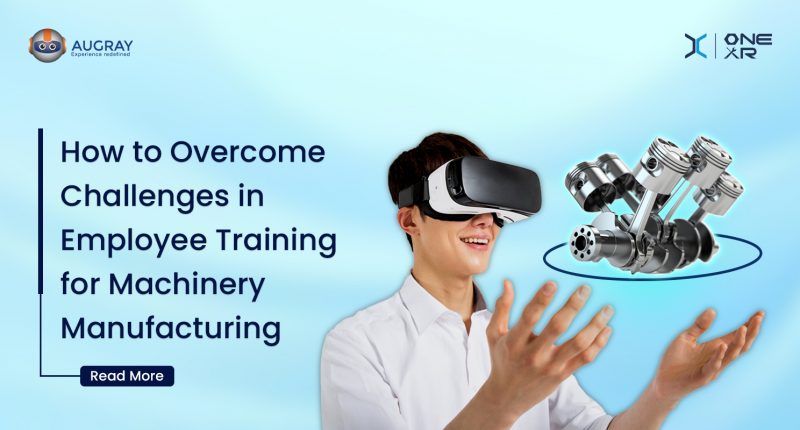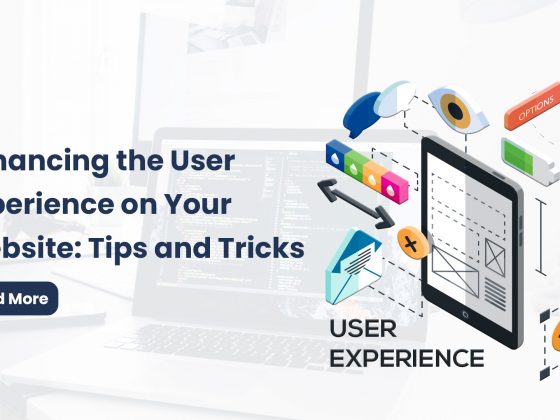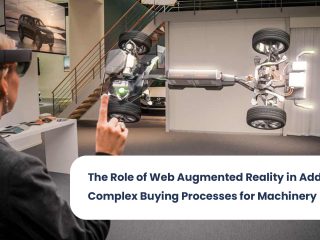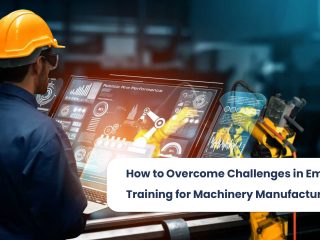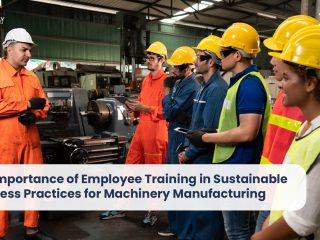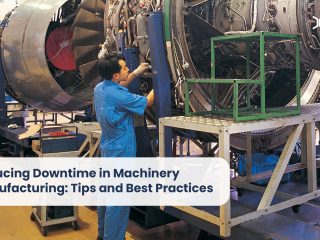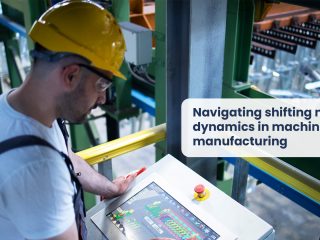Let’s check how extended reality (XR) technology comes in as a solution to overcoming challenges in employee training for machinery manufacturing.
Do you know that as the machinery manufacturing industry continues to evolve and become more complex, the need for effective employee training is more important than ever!
With new machinery and technologies constantly emerging, it can be challenging for companies to keep up with the necessary training and maintain high production standards.
XR technology provides an immersive training experience that enables employees to learn and practice their skills in a simulated environment. This can lead to higher retention rates, improved safety outcomes, and increased productivity. Here are four key challenges in employee training for machinery manufacturing and how XR can help to overcome them:
Addressing the Cost of Traditional Training Methods
Traditional training methods for machinery manufacturing can be expensive. Classroom sessions and on-the-job training require resources, such as trainers and equipment, which can quickly add up in cost. extended reality (XR) technology’s training can help reduce these costs by simulating the machinery and equipment, which can be accessed remotely, reducing the need for travel, and minimizing the risk of damage to equipment during training.
For example, a manufacturing company can train their employees on the operation of a large and expensive machine by creating an XR simulation of the machine. This enables employees to practice operating the machine in a virtual environment, reducing the risk of costly mistakes.
Providing Consistent Training Across Locations
Manufacturing companies often have multiple locations, making it challenging to provide consistent training across all locations. This can result in inconsistencies in production quality and safety standards. extended reality (XR) technology training can help to overcome this challenge by providing standardized training that can be accessed remotely from any location.
For example, a global manufacturing company can use XR technology to provide consistent training to all employees regardless of their location. The training can be delivered through a web-based platform, making it accessible to employees around the world.
Improving Retention of Information
Traditional training methods, such as classroom sessions, can often result in poor retention of information. This can lead to mistakes on the job, resulting in lost revenue and even safety incidents.
extended reality (XR) technology training can improve the retention of information by providing an immersive experience that engages employees and allows them to practice their skills in a simulated environment.
For example, an extended reality (XR) technology simulation can be used to train employees on the correct procedure for handling a specific piece of machinery. This enables employees to practice the procedure repeatedly until they are confident in their ability to execute it correctly.
Extended Seality Technology Enhancing Safety Training
Safety training is a critical aspect of employee training in the manufacturing industry. However, traditional safety training methods can be time-consuming, expensive, and may not provide employees with a realistic understanding of the hazards they may face on the job.
XR training can help to enhance safety training by providing a simulated environment where employees can experience potential hazards and practice their response to them.
For example, an extended reality (XR) technology simulation can be used to train employees on how to respond to a fire in the workplace. The simulation can include realistic scenarios that enable employees to practice their response to the fire in a safe and controlled environment.
In conclusion, extended reality (XR) can help to overcome the challenges faced by the manufacturing industry in employee training.
By providing immersive and cost-effective training, extended reality (XR) technology can improve retention rates, provide consistent training across locations, enhance safety training, and ultimately increase revenue through improved productivity and efficiency. It’s time for manufacturing companies to embrace XR as a solution to their employee training challenges.
The manufacturing sector can enhance its
employee training programs,
sales processes,
streamline product design,
prototyping,
enable faster iterations,
reduce costs and
much more by incorporating Extended Reality (XR) technology.
